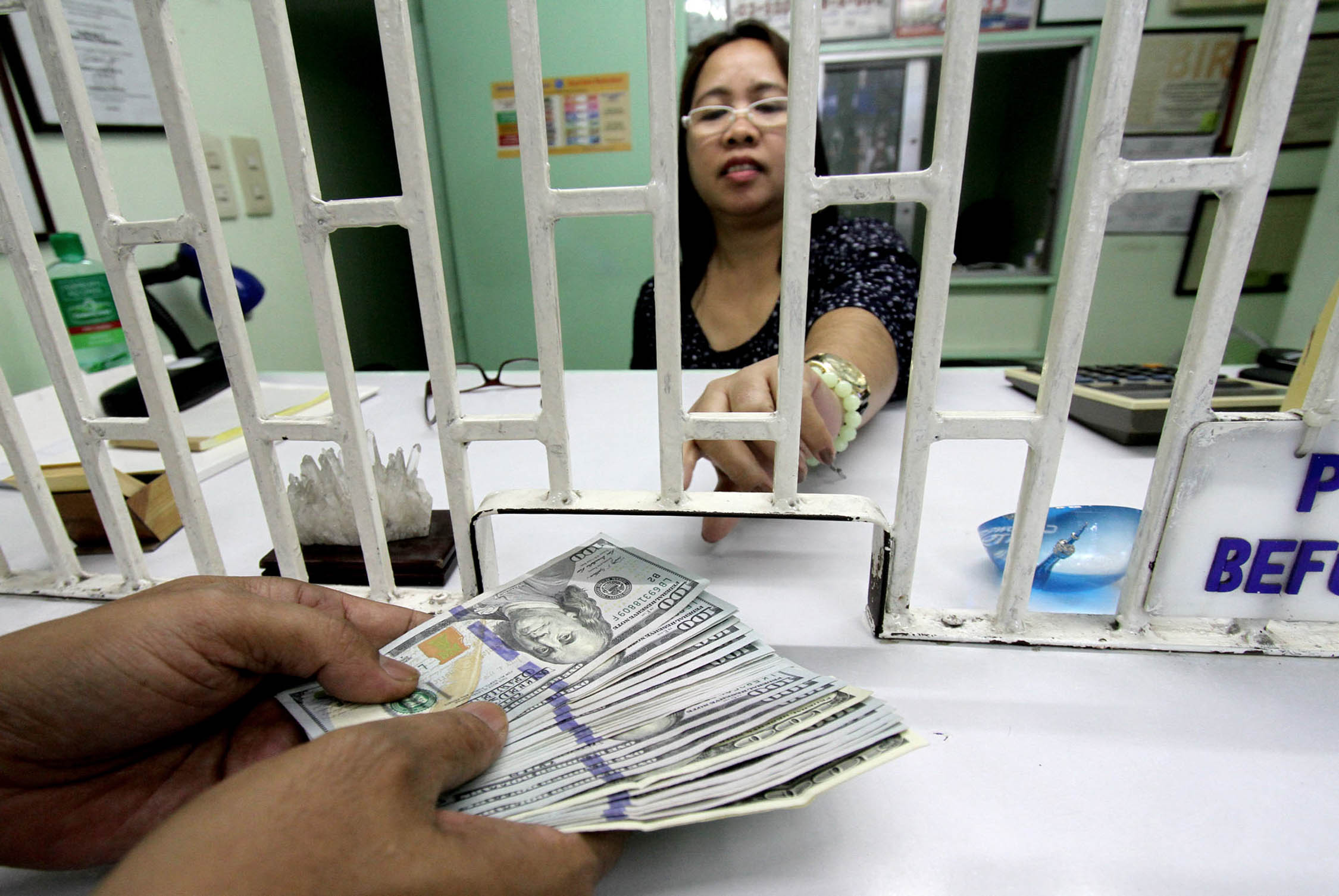
A customer changes dollars on a money changer in Manila. INQUIRER PHOTO / RICHARD A. REYES
MANILA, Philippines — Dollars sent by expatriate Filipinos to their local beneficiaries rose slightly in January thanks to increased volumes sent home by both land- and sea-based overseas workers, the central bank said Friday.
In a press statement, Bangko Sentral ng Pilipinas (BSP) Gov. Benjamin Diokno said personal remittances from the country’s workers stationed abroad grew by 3.4 percent year-on-year in January 2019 to reach $2.75 billion from $2.66 billion in the same period last year.
Personal remittances from land-based workers with work contracts of one year or more rose to $2.12 billion, 2.3 percent higher than $2.07 billion recorded in January 2018. Those from sea-based and land-based workers with work contracts of less than one year rose by 12.6 percent to $0.58 billion from $0.52 billion.
Meanwhile, cash remittances that were coursed through banks — which counts only wages sent home by expatriate workers, and excludes funds sent home by non-OFW Filipinos — totaled $2.48 billion in January 2019, a 4.4 percent growth from $2.38 billion last year.
This growth was in line with the increase in remittances from both land-based ($1.95 billion) and sea-based ($0.53 billion) workers, which rose by 2.3 percent and 12.7 percent, respectively.
By country source, the United States registered the highest share of overall remittances at 35.5 percent, the central bank said.
It was followed by Saudi Arabia, Singapore, United Kingdom, United Arab Emirates, Japan, Canada, Qatar, Hong Kong, and Kuwait. The combined remittances from these countries accounted for almost 78 percent of total cash remittances.
For all of 2018, expatriate Filipinos sent $32.2 billion to their relatives and beneficiaries back home. This represented a growth of only 3 percent from the end-2017 level of $31.2 billion — the weakest annual growth in the last four years where rates stood between 3.8 percent (2015) and 7.5 percent (2014).
Historically, dollar remittances from overseas Filipinos have accounted for as much as 10 percent of domestic economic consumption, providing a key pillar of growth for the Philippines. /kga